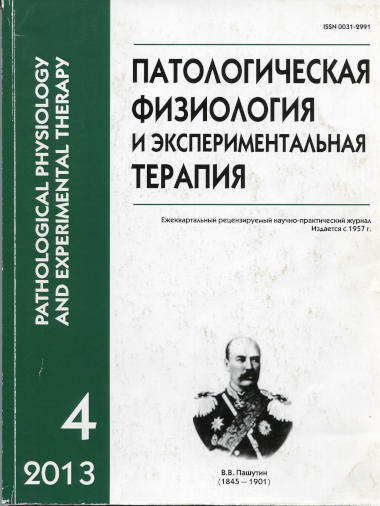Устойчивость нервной ткани ствола мозга к свободнорадикальному окислению у крыс при периодическом дыхании после введения оксибутирата
Ключевые слова:
дыхательный центр, резистентность к свободнорадикальному окислению, периодическое дыхание, оксибутират, крысаАннотация
У беспородных белых крыс-самцов под пентобарбиталовым наркозом оценивали резистентность ткани к свободнорадикальному окислению при возникновении у них патологического периодического дыхания после введения оксибутирата. Показали, что оксибутират модулирует про- и антиоксидантный статус в ткани мозга. У крыс без периодического дыхания оксибутират вызывал меньшее снижение резистентности мембранных структур ткани продолговатого мозга к индукции свободнорадикального окисления. У крыс с периодическим дыханием при действии оксибутирата повышалась чувствительность мембранных структур ткани продолговатого мозга к индукции свободнорадикального окисления. Полагают, что в патогенезе формирования патологических типов дыхания принимают участие клеточные метаболические и/или мембранные механизмы, активация которых в сетях генерации дыхательного ритма приводит к формированию патологического типа дыхания.Загрузки
Опубликован
2013-11-29
Выпуск
Раздел
Оригинальные исследования
Как цитировать
[1]
2013. Устойчивость нервной ткани ствола мозга к свободнорадикальному окислению у крыс при периодическом дыхании после введения оксибутирата. Патологическая физиология и экспериментальная терапия. 57, 4 (Nov. 2013), 21–25.













